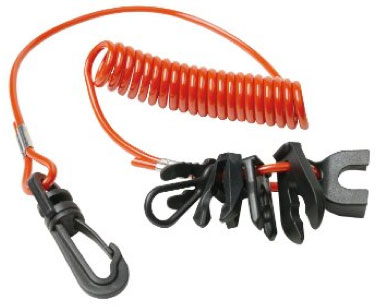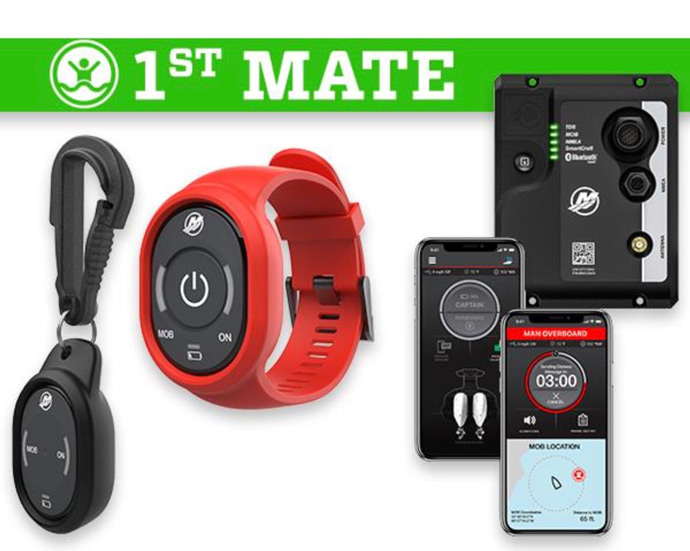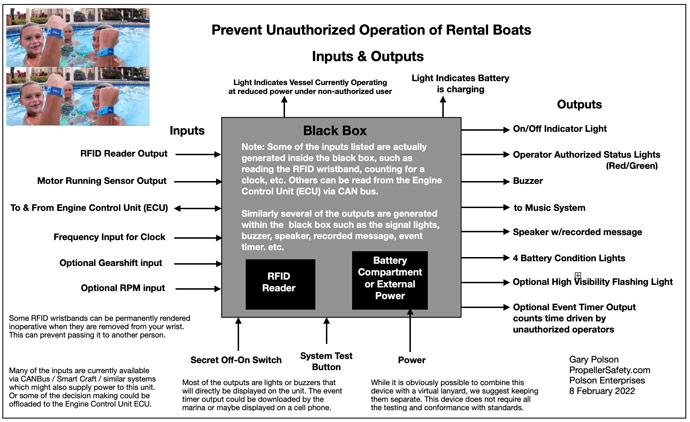Prevent Unauthorized Operation of Rental Boats Invention
Our invention eliminates / stops / prevents unauthorized individuals from operating rental boats during the rental period, sometimes called nonauthorized operation
The disclosure below of our invention to Prevent Non-Authorized Operation of Rental Boats was posted on February 8, 2022. We will make no changes to the text below the line following this paragraph except to correct misspellings, punctuation, and to update html/computer codes and links. Any updates to the invention itself will be posted below the invention disclosure.
This invention disclosure was posted February 8, 2022.
Introduction
Boat rental operations typically require one or more individuals to check in at the facility, designate what kind of boat they want and how long they want it (reservations are sometimes made earlier), sign rental documents, pay for the rental, agree to pay for fuel used when they return, receive some instruction in how to operate the boat and its systems, receive safety instructions, sign disclaimers, and verify the condition of the propeller before they take off.
Marinas and rental facilities typically require those who will be operating the boat to sign up as operators, provide their drivers license, meet certain requirements such as be sober, don’t drink or do drugs while operating the boat, meet rental requirements of that state, and receive some onsite instruction and/or previously watch a video.
Non-authorized Users Operate Rental Boats
During the rental period, non-authorized operators often operate the boat. While authorized or non-authorized operators may be at the helm during an accident, we have seen several rental boat propeller accident cases in which a non-authorized operator was at the helm. They may:
- Have previously planned to be an operator but did not complete the pre arrival training, the on site training, or meet specific requirements to be an authorized operator.
- Just decide to drive a while because they want to, or to give someone a break.
- Arrived in the middle or end of a multi day rental.
- See what they perceive to be a dangerous situation developing and immediately take action by operating the boat
- Be young children or mentally challenged individuals that just happen to have access to the keys or some other means to start the boat.
- Be individuals that were not part of your party that somehow wound up on your vessel.
- Not know they are non-authorized operators. They think it is fine for anybody to operate the boat and no one instructed them differently.
- Consider themselves to be the most capable driver at the moment due to alcohol consumption by authorized operators
- Be Law Enforcement professionals, Lake Rangers, Lake Patrol, County Sheriff’s Office, Fire Department rescue personnel, other first responders, good samaritans, marina staff, or others with legitimate needs to operate the rental vessel.
The Problem to be Solved
Prevent unauthorized operators from operating rental vessels.
Rental boats are typically rented from marinas or boat livery operations.
Operator Presence Systems
Many machines utilize Operator Presence Systems (OPS) to make sure operators are in the correct place or not in the wrong place for safe operation. For example, a basic boat OPS is a traditional kill-switch lanyard. If the boat operator strays to far from the helm or is ejected, the engine is killed (turned off).Over the last 20 plus years virtual lanyards have come on the scene. These devices determine if the operator is present or not and may incorporate additional features. Among these devices are Virtual Lifeline, CAST, Autotether, Coast Key, MOB+, and 1st Mate.
These OPS / virtual lanyard devices kill the engine in certain conditions in absence of the operator.
Evolution of Rental Boat Authorized Operator Presence System concept
The problem basically requires something of the nature of an Operator Presence System that only responds to specific operators. It is as if something resembling a boating virtual lanyard systems could identify specific operators and grant them certain uses of the vessel based upon authorization by the marina.
Some virtual lanyard systems do identify operators or groups of operators. They require the use of a fob or tag. Some virtual lanyard systems distinguish between operator and passenger tags.
Non-Authorized Operators May Have Restricted Access
Kill switch lanyards and virtual lanyards can both kill the engine and require some action to restart the engine. Those are serious actions and require at least a little training. Activation or failure of the device might create challenges beyond the capability of some renters during an emergency. For example, if the operator fell out or was ejected with the manual lanyard remained attached to them, and those onboard were trying to quickly restart the boat to go rescue the operator with no training.
Killing the engine for non-authorized users in all situations is a little harsh and may not even be safe in some situations. Events could arrive requiring immediate action by a non-authorized operator to prevent a serious accident, injuries, death, and/or extensive property damage.
More proper actions would include warning the operator, and those on boat, and potentially others a non-designated operator is at the helm. The device could activate a light, flashing light, buzzer, horn, or verbal warning every few minutes that a non-authorized operator was at the helm when the engine is running.
The system would not need to check for presence as frequently as virtual lanyard man-overboard systems. Detection of an authorized operator when the engine is being started and only periodically when the boat is underway would be required.
Such a system would reinforce safety practices by assuring the operator went through the training required by the marina.
Our Claims
We (Polson Enterprises and the Propeller Guard Information Center) claim the propeller safety invention described above and now make a public disclosure of it and place all parts of it not previously patented by others into the public domain for use by all who wish to manufacture or use them. The world is certainly welcome to patent improvements to this invention but the basic concepts not previously patented by others are open to all.
1. A device to prevent or restrict unauthorized operation of rental boats.
2. The device in Claim #1 which consists in electronic terms as a “black box”.
3. The black box described in Claim #2 with inputs and outputs similar to some or all of those shown in the image below.
Sketch of the Prevent Unauthorized Operation of Rental Boats System
Prevent Unauthorized Operation of Rental Boats – CLICK image to see larger PDF
The system as described in the sketch is a deluxe model with lots of bells and whistles. The very basic function can be achieved with fewer inputs and outputs.
4. The purpose of the black box is to determine if the current boat operator is authorized or not. If they are authorized, they have full access to normal operation of the boat. If they are not authorized they will be informed they are not authorized and may be granted limited access with possible additional features.
5. Authorized users as identified by the marina can be identified by reading an RFID tag that may be attached to a wrist band, be part of a fob, or otherwise paired with the user.
6. RFID wristbands may be non-removeable, such as must be cut to remove them.
7. The act of removing RFID wristband in Claim #6 may render the RFID tag inoperable.
8. Non Authorized users attempting to operate the vessel may be informed they are non authorized by a blinking light, by a large flashing light, by a recorded verbal message, by a buzzer, by honking the horn, or similar alerts.
9. The alerts described in Claim #8 may also be made to others on board and to those in the water nearby so they know an unauthorized user is at the controls.
10. When a Non Authorized user attempts to start the engine, those on or around the boat may be automatically alerted before the engine is started by the music being turned off, a recorded verbal waring, by honking the horn a few times in quick succession, or similar means for a few seconds before the engine is started. This will alert those in the water nearby as well as those onboard an unauthorized user is about to start the vessel.
11. Restrictions described in Claim #4 may include turning the music off or to a low level so people can hear better. Turning the music down or off is also an incentive to only use authorized operators.
12. Restrictions described in Claim #4 may include limiting maximum RPM of the engine which limits top speed.
13. When the engine is killed the black box is reset, and will require an authorized user to start the engine to have normal full access to the vessel.
The black box may:
14. be battery powered, powered by the vessel’s electric system, or by other means.
15. make use of CAN bus type architecture to communicate with other systems on the vessel and with the Engine Control Unit (ECU). For example Mercury Marine refers to their CAN bus system as SmartCraft. See the images with Brunswick’s US Patent 6,273,771 in the Other References section below.
16. have a secret off on switch for use by the marina. That switch might be operated by a non contact RFID wrist band, fob, or card.
17. Some marine drive manufacturers already have reduced RPM modes such as those described in Claim # 12 and other practices to protect their engines in the event of overheating, low oil pressure or other similar issues that might damage the engine. For example, Mercury Marine has their Guardian System with several modes of operation for protecting their engine. Existing systems similar to these could be used to restrict power and features available to non authorized users.
The black box may have:
18. a system test button to make sure the box is operating properly.
19. multiple battery condition lights indicating charge level of the battery.
20. a light indicating the internal battery is charging.
21. inputs individually or via the Engine Control Unit apprising the black box of when the engine is running, when the engine is in gear, current engine RPM, and other variables.
22. record the total amount of time an unauthorized user is operating the vessel in a manner readable by the marina upon return of the vessel or remotely during operation.
24. a buzzer, flashing light, speaker to play a recorded verbal message or other means of alerting those onboard or near the vessel.
25, access to the boat horn or other systems onboard to alert those onboard or near the vessel.
23. an on-off switch.
24. The black box on-off switch may be only operated by the marina via a fob, card, magnet, or some other means.
25. The black box may be connected to the Engine Control Unit (ECU) allowing access to condition status of several vessel systems (engine RPM, in gear or not, boat speed, GPS, etc.)
26. Some or all of the decisions made by the black box might actually be made by the ECU.
27. With the exception of the RFID reader, the rest of the functions might be moved to the ECU.
28. The black box reads the presence of an authorized operator by reading their RFID wrist band. The system then rechecks for the presence of that band periodically such as every few minutes.
29. In the event the boat is underway and detects an unauthorized user at the helm (such as when operators trade underway), a verbal announcement will tell the operator the boat is going to slow down over the next several seconds because they are not an authorized operator. The boat will be safely, gradually, slowed down. Decisions will be made if it is safe to stop and kill the engine right now or not so an authorized operator can take over. If the boat continues underway at slow speed, the non authorized operator warnings will be sounded, music will be turned off, etc.
30. While the sketch above appears to indicate the system is wired to various inputs and outputs, some of all of those inputs and outputs could be wireless connections.
The black box system could be:
31. a third party system installed by the marina.
32. setup by the vessel manufacturer or marine drive manufacture when the boat or marine drive are manufactured.
33. a kit supplied by the vessel manufacture of marine drive manufacturer.
34. The black box may be integrated with a virtual lanyard system.
35. In the event of an emergency on a large lake and no authorized users were able to operate the boat (they are lost, dead, drunk, etc) and a non authorized operator endures the slow maximum speed for a given time such as 30 minutes, they might be temporarily granted access to full power so they can return to the marina.
36. The marina might be able to wirelessly interact with the black box from a distance. (Grant power to new operator based on a phone call, etc).
Marina Training
The marina can explain the system to renters as part of their vessel orientation.
Renters only need to know:
1. The system enforces authorized boat operators (those with the wristbands) but will still allow unauthorized users restricted use such as during an emergency after alerting those on board and nearby.
2. Authorized users have been issued wristbands.
3. Wristbands cannot be shared. If they are cut off they will not work.
4. When the vessel is returned the marina can read total time underway by unauthorized users and they (those who rented the vessel) better be prepared to explain an excessive total time.
Additional Reference Materials
- US Patent 6,273,771. Control System for a Marine Vessel. Issued to Brunswick. August 14, 2001 for a CAN bus integrated electronic control system. Brunswick/Mercury Marine now calls theirs SmartCraft. Other marine drive manufacturers have their own name for their own system.
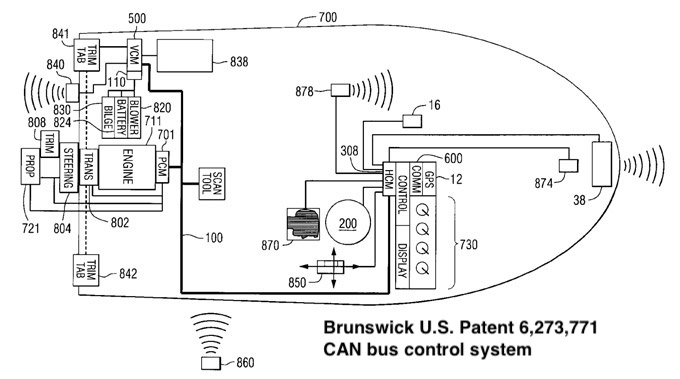
Brunswick CAN bus patent
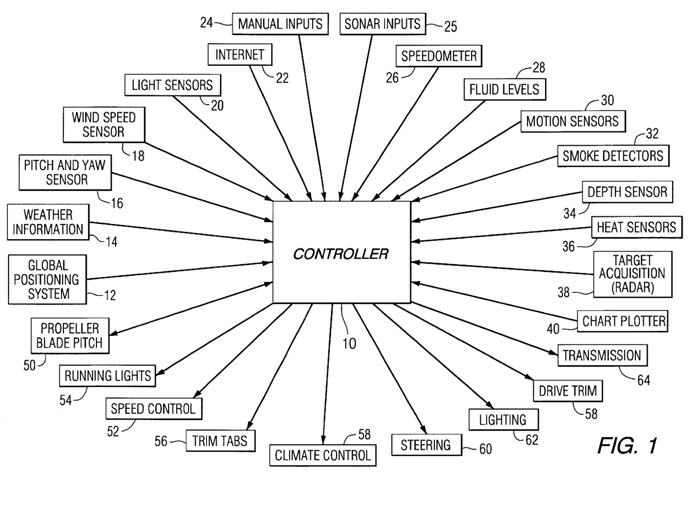
brunswick-canbus-controller
You can see above that the CAN bus format allows the attached systems visit with one another and with the controller (like computers on the same network).
Brunswick has since integrated all kinds of systems into their basic CAN bus layout. Some of the following are in production, others have been patented: auto trim, assisted docking, virtual lanyards, marine drive collision detection, systems to detect people in the water near the stern, systems to look for people around the vessel, joystick steering, and much more.
- Lime – Your Ride Anytime the popular green scooters you can rent with a phone
- 4th bike-sharing operator targets indiscriminate parking with technology. Today Online Singapore. August 24, 2017. Near the end of the article they note they now have a contactless card that can be used to unlock bicycles and make it easier for riders that are not tech-savvy.
- US Patent 9,986,311. Automated Operator-Equipment Pairing System and Method. Assigned to Husqvara. Issued May 29, 2018. Husqvara is well known manufacturer of landscaping equipment, mowers, chain saws, etc. This patent allows them to pair one of more tools to one or more landscaping workers allowing them to use the equipment.
- US Patent 10,730,600. Lanyard System and Method for Marine Vessel. Assigned to Brunswick.Issued August 4, 2020. One of Brunswick virtual lanyard patents utilizing Fell Marine’s technologies.
- US Patent 11,014,642. Lanyard System and Method for Marine Vessel. Assigned to Brunswick. Issued May 25, 2021. Another Brunswick virtual lanyard patent.
- US Patent 11,030,880. Loss Prevention System. Invented by Rolinston Rodney. Issued June 8, 2021. Tag systems like the Apple AirTag help you find lost items. This invention alerts you before those items exceed some distance from you.
- Korean Patent KR 101745443B1. Authentication system for driver of vehicle. Issued June 12, 2017. The driver can be identified by camera images and checked against who should have access to that vehicle at that time.
Learning Modes
All non racing Personal WaterCraft (PWC) in the U.S. are supposed to be speed limited to 67 miles per hour via a gentleman’s agreement between the manufactures and the Coast Guard to avoid government regulations.
Some Personal WaterCraft (PWC), ATV’s, and snow mobiles have learning modes or multiple modes of operation.
Some PWC rental operations speed limit their PWCs.
Ford’s MyKey system can speed limit cars for younger drivers.
Some cars have valet key limiting speeds to valets parking the vehicle.
Mercury Marine used a fob to tame their 1150 dual calibration stern drive.
Keys, Fobs, RFID Wristbands, Cards, Chip Implants, Face ID, etc.
There are many ways to identify individuals that have been authorized to operate the vessel due to them being approved by the rental operation. Typically after signing in as an operator, providing their drivers license, completing the requirements of the state or their state, viewing any videos required, being present during the orientation and on vessel training they become authorized operators. Sometimes a designated operator is also the one making the financial arrangements to rent the boat.
For example those designated as boat operators could be given a key or fob by which to operate the boat. The problem with keys or fobs is they are easily passed to others. Others may think anybody can be an operator, or anybody the authorized operators give a key or fob is fine to drive.
RFID wristbands are an economical means of identifying specific individuals during the rental period. They can be issued to authorized operators who are instructed not to share them with others.
You may have seen them used for concert / festival attendance, for billing purposes, waterparks, and more. For example Wyndham Resorts uses them access to your room, billing / payment, accessing certain amenities, and much more.
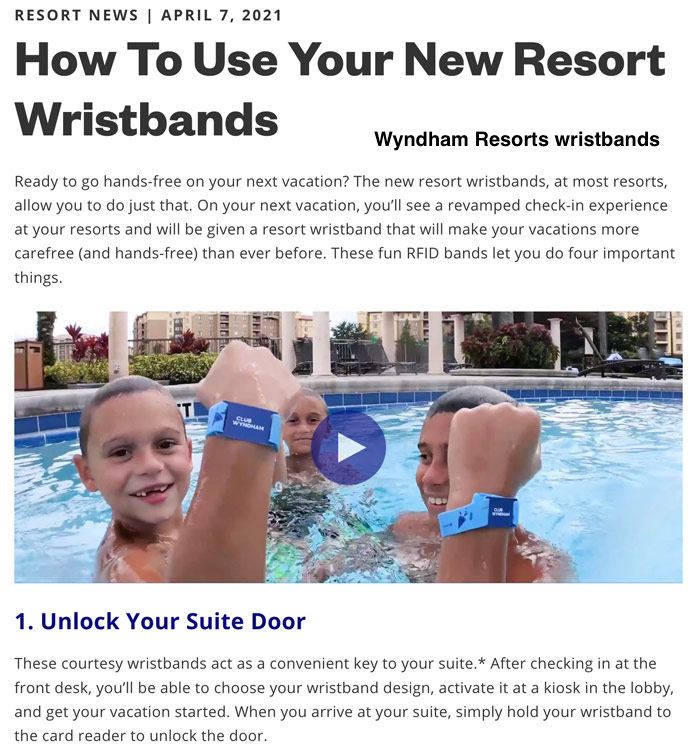
Wyndham Resorts RFID wristbands
Some hotels now use them as room keys. A logo on the wrist band identifies the hotel. They can even be used to charge stuff to your room.
Some are fine to be used in water. Some prevent removal or sharing with others. Some are no longer useable after they have been cut off.
Tyvek RFID wristbands are said to be popular at water parks and amusement parks.
Silicone RFID wristbands are particularly suited to the marine environment. They are colorful and can be printed on. Fell Marine MOB+ and their joint operation with Mercury Marine (1st Mate) appear to use silicon wristbands as seen near the top of this page.
Some cloth RFID wristbands use a locking bead closure that prevents transferring the band from one person to another.
Some Tyveck (DuPont Tyvek, paper like RID wristbands, have tamper proof adhesive closures that prevent the band from being reused.
ANICE is one of countless firms providing RFID wristbands. A portion of their offering is shown below.
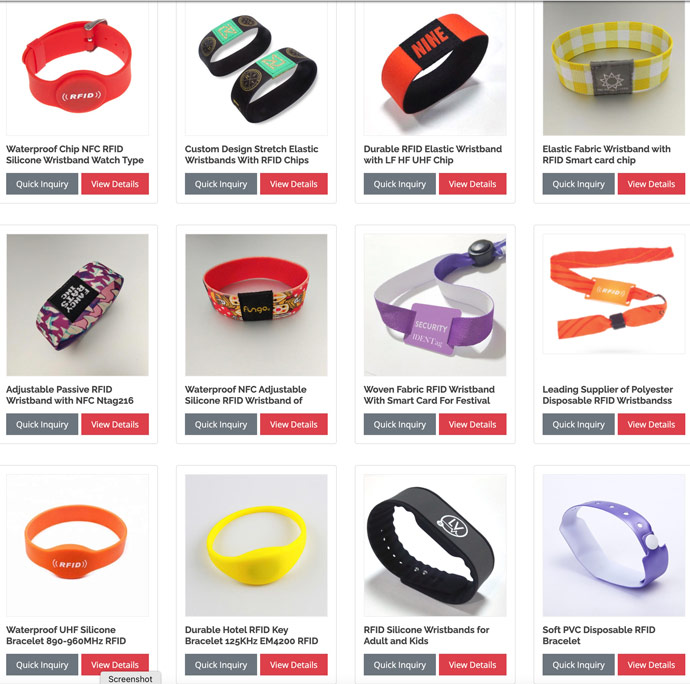
RFID wrist bands by ANICE
The END
Any future related information will be posted below this line.
10 March 2022 Update
If marinas could demonstrate success in reducing boat and property damages, and/or reduced injuries and fatalities, all or a portion of their purchase and installation costs of these devices might be offset or recovered in the manners listed below:
- Less damage to vessels and property reduces repair costs while increasing the number of days over which individual boats are available to be rented.
- Reducing boat damages and property damage costs might allow marinas to increase the deductible on their insurance.
- Marinas might be able to encourage their insurance companies to pay for a portion or all of their expenses related to purchasing and installing these devices.
- Insurance companies might actively encourage use of these devices.
9 February 2022 Update
- This application may require ACTIVE RFID chips instead of PASSIVE RFID chips. Active RFID chips broadcast their location vs being read by a reader. They are more expensive but could be reused over and over by the marina. They are basically the same chip with an internal battery and the electronics to intermittently chirp out their number as a radio signal. If active chips were used the black box would need an RFID receiver instead of a reader. Passive RFID tags receive enough energy from the reader to chirp out their number.
- The system can be tuned to only detect tags near the helm so others on board with RFID tags are not seen or are eliminated so the system does not think they are at the helm.
